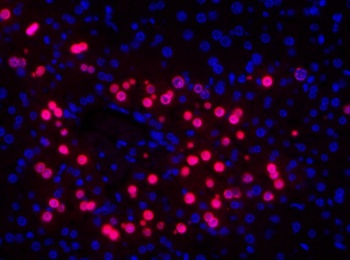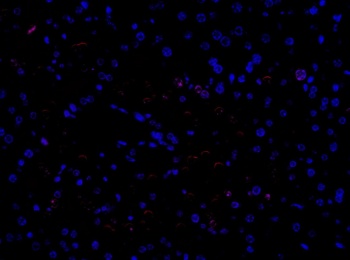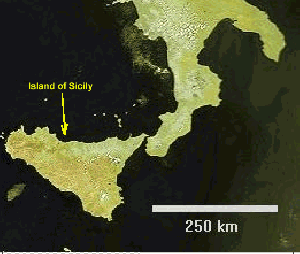This fall I have been teaching Topology I (Topology II next spring). I decided to emphasize algebraic topology and in fact started with it rather than point set topology which alone can take two semesters.
Outline
This is an introductory, two semester course on algebraic topology and its applications. It is intended for advanced undergraduate and beginning graduate students.
Part 1. Introduction to algebraic topology
Starts with topological issues in digital image analysis, informal introduction of homology
Part 2. Homology theory
Cubical complexes, their homology, and maps
Part 3. Overview of point-set topology
Minimized to the extreme (still could have cut even more)
Part 4. Homology groups
A more formal, group theory based, exposition
Part 5. Homology and uncertainty
Applications in computer vision, image analysis and data analysis
Part 6. Beyond homology
The fundamental group and cohomology
Also, I ran across this white paper from Hewlett-Packard: Algebraic topology for computer vision. Good review and an honest attempt to convince the practitioners to that this is something that they might need to know (good luck with that!).
Comments Off
Q: we need to “count cell/dna etc from still microscopic image… Here we stained DNA …S-phase are in red and G-phase is in Blue. We want to count how many red are there and how many blue are there.”
I used Pixcavator and did a bit of experimenting with the first image. The red cells are easy to capture - in the red channel, 71 total.
Now the red cells are so bright that in the blue channel they are also present. So, here you see both red and blue and have to subtract:
299 - 71 = 228 of the blue ones.
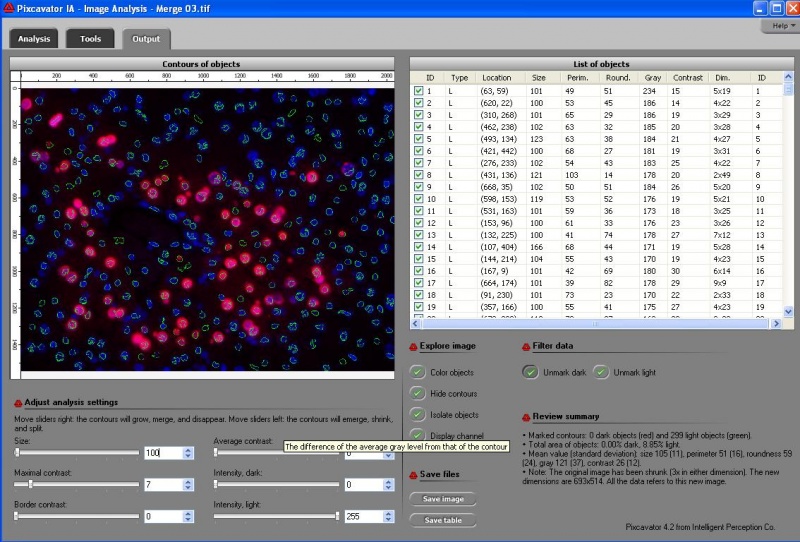
Using subtraction here isn’t a perfect solution clearly. To separate red and blue one might try to filter the spots based on the size or intensity.
Image processing can help too - I simply removed the red using Photoshop Elements.
The total was 204.
One day you’ll be able to use the true color analysis.
See examples of image analysis.
Comments Off
The next version of Pixcavator has just been released (download). The update will help the user to create better image analysis reports with Excel.
These reports are based on the data in Pixcavator’s output table that lists all objects in the image as well as their measurements and locations. The table, combined with the analysis settings, the statistical summary, and the frequencies of the values in the table, can be saved to hard disk in the form of a spreadsheet. This spreadsheet is a complete report of what has happened.
The frequencies allow one to create a histogram for each column, such as the size, to graphically illustrate the distribution of the values. One can also add images, format the text, etc. The end result may look like this:

For more details read Report generation in the wiki.
A note to our current customers: If you purchased Pixcavator within the last 12 months, i.e., after December 13, 2008, you are entitled to a free upgrade. You can download the new version here and then activate it with your current activation number. If your purchase dates before December 13, 2008, you can acquire the new version here. It goes without saying that the older versions of Pixcavator are to remain active indefinitely.
In the late December the price of Pixcavator will be increased to $245.
From other news, our site Computer Vision Primer has reached 268 articles with over 780 illustrations. The fastest growing category is image analysis examples which has reached 56.
Comments Off
I took this image analysis example from the site of Able Image Analyzer. It was easy to reproduce the results with Pixcavator.
Setting the contrast slider at 100 gives you good contours for both Sicily and the calibration bar. The length of the latter is see to be 217 pixels, so
217 pixels = 250 km.
The are of Sicily is see to be 18884 pixels, so
the area = 18884*(250/217)^2 = 25064 sq km.
(Here 250/217 is the calibration factor). The actual area is 25706, so the error is about 2.5%.
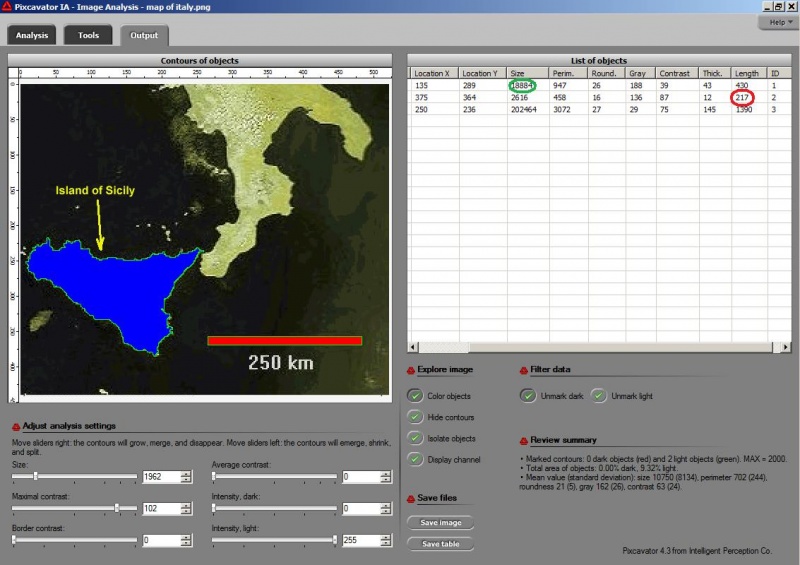
See other image analysis examples.
Comments Off


